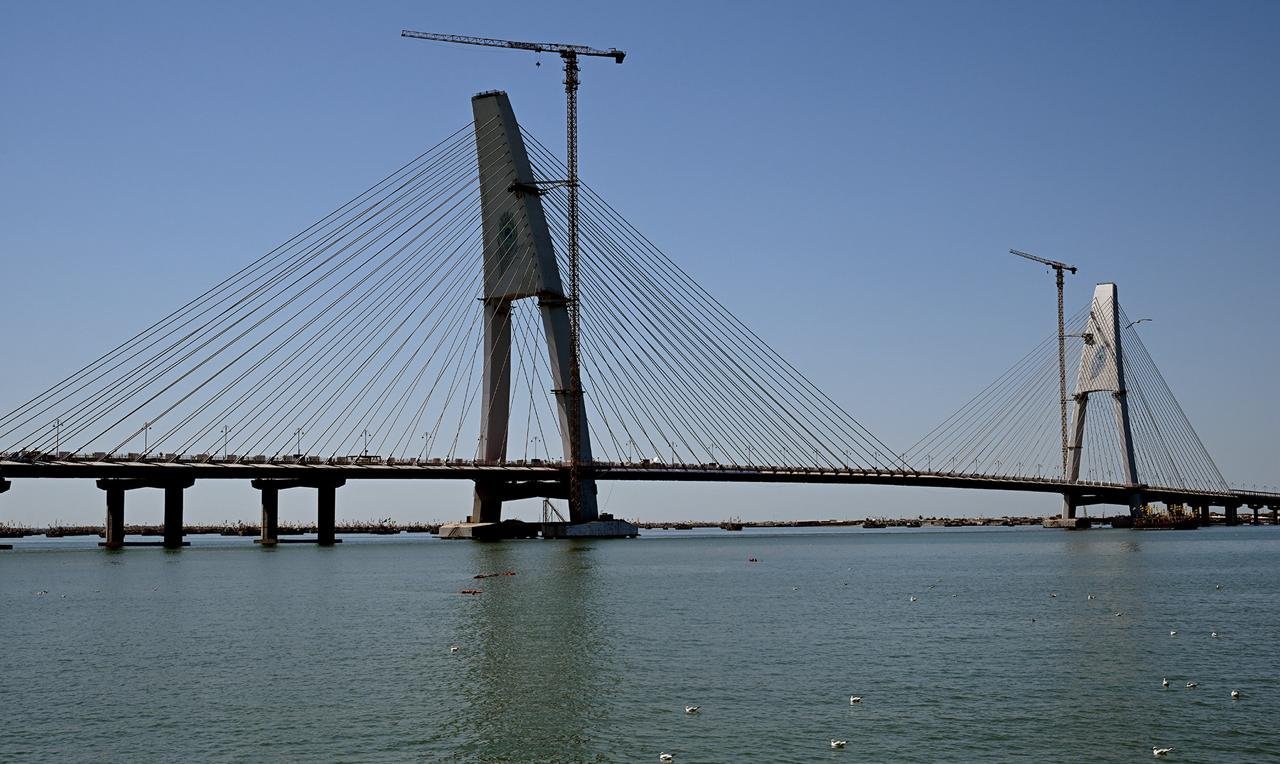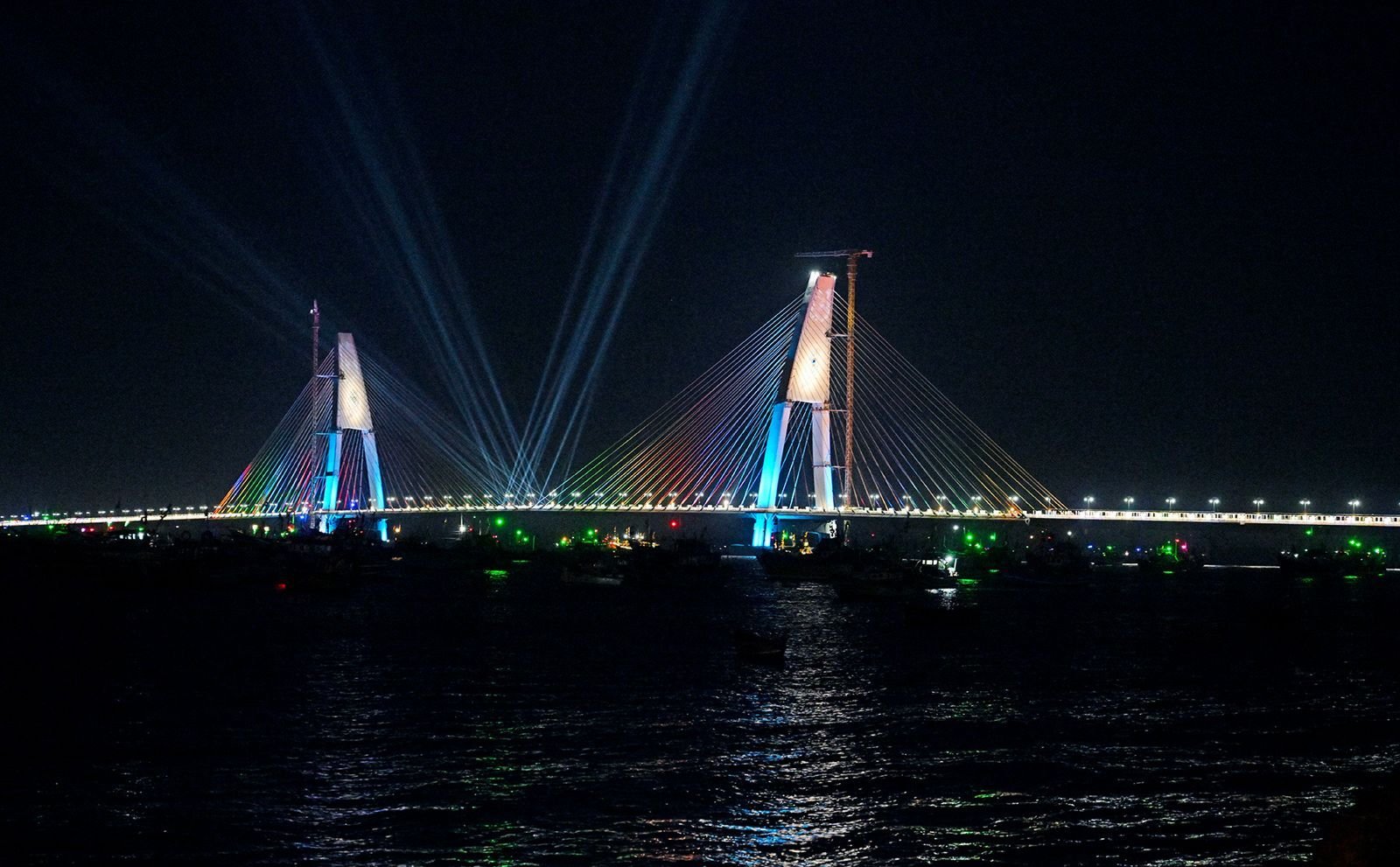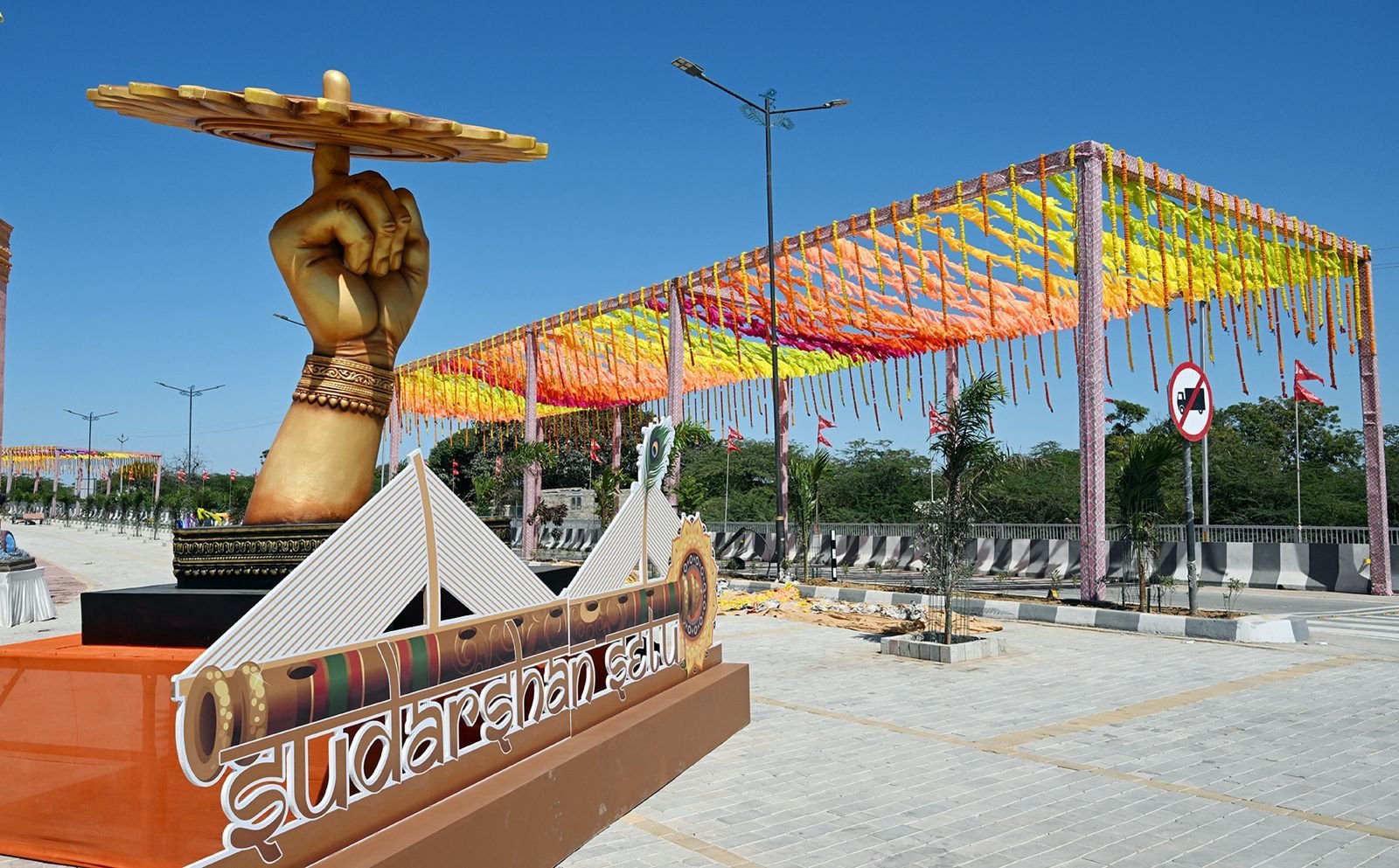Prime Minister Narendra Modi inaugurated the 2.32 kilometer long Sudarshan Setu connecting Okha on the Gujarat mainland to Beyt Dwarka Island on February 25.
With a 900-meter long cable-stayed portion, it is the longest cable-stayed bridge in India built at an estimated cost of ₹979 crore.
Architecture of Sudarshan Setu
The state-of-the-art Sudarshan Setu has an innovative fan-shaped cable arrangement held by 129.985-meter tall pylons that lean up to 22 meters from the center.

“The total width of the four-lane bridge is 27.2 meters, including two 3.5 meter wide lanes on each side for vehicular movement along with a 2.5-meter wide footpath on either side for pedestrians,” explained Girishbhai Patel, the lead architect.
The footpaths feature solar panels to generate sustainable energy along with cultural elements like verses from Hindu scripts and images of deities that reflect the region’s spiritual heritage.
Strategic Connectivity Enhancement
Built over the Gulf of Kutch, the bridge connects Okha on the Saurashtra peninsula to Beyt Dwarka island that houses several Hindu shrines. Okha is an important port town that plays a key role in Gujarat’s economy.
Earlier, connectivity to Beyt Dwarka was limited to basic ferry services only operational in daytime.

The bridge will now enable 24-hour connectivity between the mainland and the island located 30 kilometers from Dwarka.
Beyt Dwarka receives over two million pilgrims annually visiting holy shrines like the ancient Dwarkadhish Temple. The bridge promises simpler access for devotees through the year.
Impact on Tourism and Commerce
The enhanced connectivity is set to give a major boost to tourism and commerce between Okha and Beyt Dwarka. Easier access facilitated by the bridge is likely to augment religious tourism in the area.
The bridge could also potentially lead to development of hotels, restaurants and other tourism-linked industries on the island itself. “For the 8,500 island residents, it opens up employment opportunities in tourism and allied sectors,” noted Amit Shah, Minister of Home Affairs.

Fisheries too could thrive with faster transportation of catch from the island to lucrative markets on the mainland.
However, the bridge may have certain environmental implications with heightened human intervention on the ecologically sensitive island that has coastal mangrove forests.
Technical Milestone, But Funding Concerns
As one of India’s longest cable-stayed infrastructures built completely within the country, the Sudarshan Setu marks a major technical milestone.
However, it was constructed by Chinese firm SP Singla Constructions, raising uncomfortable questions on India’s continued dependence on foreign collaborators for engineering mega-projects.
At ₹979 crore, it is also among India’s most expensive infrastructures on a per kilometer basis. Public finance experts argue that the massive funds could have been diverted towards more essential development areas like healthcare and education.
Socio-Economic Impact
While the bridge promises enhanced connectivity and tourism growth, its indirect impact needs to be studied over the next decade. Areas that need closer analysis include:
- Environmental changes from increased construction & waste
- Pressures on local infrastructure with more visitors
- Economic disparity from uneven tourism gains
- Transforming livelihoods – reducing dependence on fishing
- Balancing industrialization with ecological preservation
As population dynamics and land utilization patterns evolve, the Sudarshan Setu’s socio-economic impact will become clearer. The state needs to ensure that gains are evenly distributed to uplift the region holistically.

The bridge represents India’s engineering prowess, its justification from a social cost perspective remains debatable as more essential development sectors may have been underfunded.
Nevertheless, the project provides a connectivity blueprint that could be replicated across geographies to energize religious tourism nationwide.
Also Read: Jammu & Kashmir’s Transformation of Rs 32,000 Crores.












Comments 3